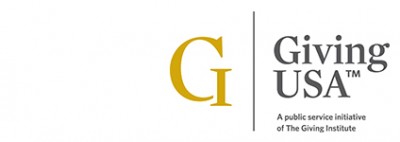 “Giving USA 2015,” the annual report on American philanthropy, was published today and this year’s report brings happy news. Charitable giving rose 5.4 percent last year to a record $358.4 billion, according to estimates from the annual report by the Giving USA Foundation and researched and written by the Indiana University Lilly Family School of Philanthropy.
“Giving USA 2015,” the annual report on American philanthropy, was published today and this year’s report brings happy news. Charitable giving rose 5.4 percent last year to a record $358.4 billion, according to estimates from the annual report by the Giving USA Foundation and researched and written by the Indiana University Lilly Family School of Philanthropy.
Not only did donations rise, they were highest since 2007, before the recession began to impact donation numbers. Here are a few noteworthy points from the report:
Special Report: What You Need to Know from Giving USA 2015
1. Individuals account for more than 80% of all the donations (including bequests). People, not foundations or businesses, contribute the most dollars to charitable endeavors. Let us never forget that at the heart of philanthropy is a generous person who wants to make their money count in the world.
2. The recession impacted giving to a greater extent than was previously reported. Total giving dropped by 14 percent from 2007 to 2009. The biggest decline in the 60 years that contributions have been recorded by the report.
3. Gifts to international aid groups fell by 3.6% in 2014. The decline is credited to the lack of overseas natural disasters. In years when disasters occur, donations are greater.
4. Religious giving remains strong but the future has cause for concern. Religious organizations generated 32 percent of total gifts and $114.9 billion but are receiving a lower percentage of total gifts than previous years when they received 40 to 50 percent of all giving. Giving to faith-based organizations was 56 percent of the total from 1985 to 1989 but reduced to one-third of all giving from 2010 to 2014.
5. Mega-gifts (those at $200 million or more) tend to go to large institutions. Many mega-donors made their fortunes in the technology field and are by and large younger than donors of the past. They have many years of philanthropy ahead of them.
Philanthropy is in growth mode and we’re thrilled to have the honor of helping you fundraise smarter. This is not a time to sit back and coast, but rather to seize the opportunities that lie ahead.
Which aspect of the report surprises you most?

